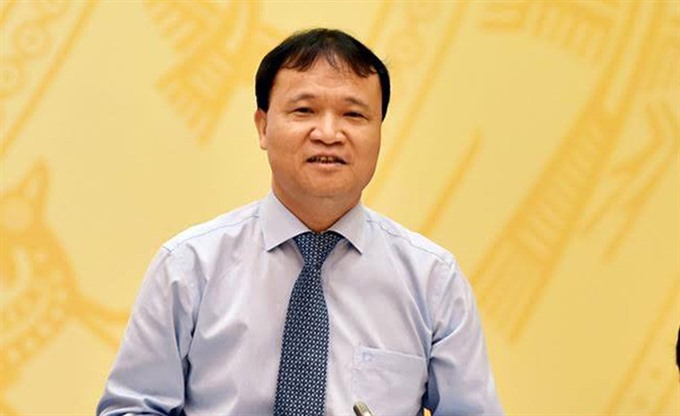On the occasion of the visit of General Secretary, President Nguyen Phu Trong to Cambodia from February 25 to 26, Deputy Minister of Industry and Trade Do Thang Hai talk with the Vietnam News Agency about economic and trade development co-operation between the two countries.

On the occasion of the visit of General Secretary, President Nguyen Phu Trong to Cambodia from February 25 to 26, Deputy Minister of Industry and Trade Do Thang Hai talk with the Vietnam News Agency about economic and trade development co-operation between the two countries.
Could you describe the results of economic and trade co-operation between the two countries in the past?
Viet Nam has a fine traditional friendship with Cambodia, in which economic and trade co-operation plays a very important role. In recent years, the co-operation between the two sides has gained significant achievements as Viet Nam is Cambodia’s third largest trade partner. The two countries’ trade turnover has maintained a positive and stable growth rate at an average of 9.8 per cent per year.
Last year, trade turnover between Viet Nam and Cambodia reached nearly US$4.7 billion, up 23.8 per cent year-on-year. Cambodia is also a market Viet Nam has a huge trade surplus with, hitting $2.8 billion last year.
Cambodia is a market that consumes a lot of Vietnamese products such as iron and steel, textiles and garments and materials, plastic products, machinery, equipment and parts and various kinds of fertiliser. Meanwhile, it provides raw material products for Viet Nam’s domestic production and exports such as raw agricultural items, forestry and aquatic products and minerals.
Over the years, Viet Nam has effectively co-operated with Cambodia in bilateral economic and trade co-operation mechanisms and in multilateral mechanisms. The two sides have completed important legal foundations in trade development, such as the bilateral trade promotion agreement. In addition, the two countries have also participated in regional co-operation agreements in ASEAN such as ASEAN Trade in Goods Agreement (ATIGA).
At the same time, border-trade infrastructure between the two countries has significantly improved, contributing to facilitating business communities and border residents to trade and attract investment. Agencies and localities of the two countries have regularly organised seminars to enhance understanding and solve problems for businesses of the two sides.
What are the advantages and disadvantages of the two countries in economic and trade co-operation promotion?
Viet Nam shares a border with Cambodia so it is very convenient for goods exchange between businesses and border residents. In recent years, our Party and State have paid great attention to the construction and development of border infrastructure as well as border trade with Cambodia. Border gates, roads and border markets have been upgraded to ensure increased transport of goods and people across the border. Besides, we have also gradually improved domestic legal frameworks and border trade agreements.
Both countries are members of ASEAN, benefiting from the region’s commitments. According to commitments and roadmaps for tax cut of the ATIGA, most import and export goods between Viet Nam and Cambodia are taxed from zero to 5 per cent.
However, Vietnamese goods exported to Cambodia are subject to fierce competition with goods from China and Thailand. Moreover, commercial infrastructure in border gates, transport systems, communication systems and payment and delivery services between the two sides are still limited.
What can Viet Nam and Cambodia improve in the near future?
Although the economic and trade relations between Viet Nam and Cambodia have strongly developed, in my opinion, the development potential is still great, needing not only the efforts of State agencies and local authorities but also the co-operation of the Vietnamese and Cambodian business communities.
Viet Nam and Cambodia are both dynamic developing countries, with their own great potential for economic development, creating many opportunities for promoting co-operation. Besides, the two countries have many similar characteristics in terms of culture, market demand and consumer habits, which are very favourable factors for Vietnamese goods and services to be well received in this market.
Along with bilateral agreements, agreements in the ASEAN region will continue to boost the economies of the two sides. This not only makes the other’s market access opportunities higher, but also creates opportunities for investors to expand their investment, production and business, developing a regional value chain to export goods to ASEAN countries and other markets around the world with free trade agreements.
Viet Nam and Cambodia also have a lot of potential to promote co-operation in areas like consumer goods production, energy, electricity, mining, processing, agriculture, forestry and seafood.
To turn such potential into reality, we need to implement solutions such as: continuing to maintain and develop an open and convenient investment and business environment, improving the legal framework for co-operation activities between the two countries and strengthening the implementation of trade facilitation measures such as simplifying administrative procedures, investment and import and export procedures and tariff preferences.
The two countries also need to promote bilateral co-operation mechanisms through the intergovernmental committee and working groups of the two governments to review, evaluate and remove difficulties for enterprises. Authorities should organise expos, exhibitions and seminars connecting trade and business delegations of the two sides. — VNS





